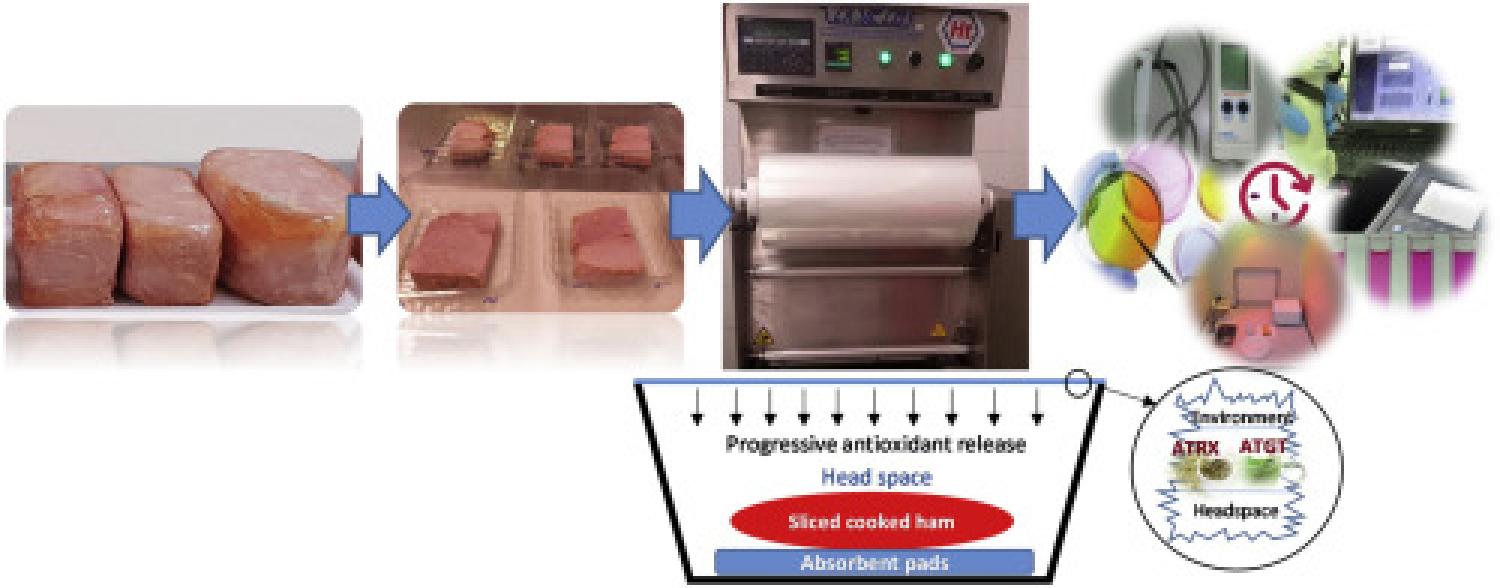
Elsevier, Current Research in Food Science, Volume 1, November 2019
The effectiveness of active packaging systems with green tea extract and oregano essential oil was checked for their use in sliced cooked ham. Three packaging systems were evaluated: i) control group without active film, ii) ATGT packed with active film of green tea extract (1%) and iii) ATRX with a mixture of green tea extract and oregano essential oil (1%). The evolution of microbiological, physicochemical (pH, aw, colour and lipid oxidation) and sensory attributes were analysed after 0, 7, 14 and 21 days of refrigerated storage. Microbial populations were below the limits established by the European Regulations (106 UFC/g). The samples packed with ATGT showed the better antimicrobial activity against total viable counts (TVC) and lactic acid bacteria (BAL), while lower counts of Brochothrix thermosphacta was observed in ATRX film (1.48 vs. 1.78 and 2.59 UFC/g for ATRX vs. ATGT and CON, respectively). Regarding colour, low differences were found between the samples packaged with active and control films. Unlike L*, a* and b* parameters showed a progressive diminution throughout the storage in all batches, being the films that contained green tea (ATGT) were the ones that showed the less discolouration at the end of storage (8.86 vs. 8.63 and 7.50 for ATGT vs. CON and ATRX, respectively). The low fat content of this type of product and the use of anaerobic atmosphere for the packaging of cooked ham did not allow to show an antioxidant effect on lipid oxidation (values below 0.15 mg MDA/kg). Finally, the use of ATGT and ATRX did not suppose a modification of the sensorial attributes of the product, being acceptance scores under the acceptance limit during the whole display.
